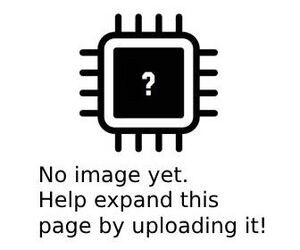More actions
| MacBook Pro A2141 Not turning on, drawing 0.10-0.15A at 20V repair | |
|---|---|
| Device | MacBook Pro A2141 |
| Affects part(s) | Motherboard |
| Needs equipment | multimeter, soldering iron, soldering station, thermal camera |
| Difficulty | ◉◉◉◌ Hard |
| Type | Soldering |
This article is a stub. You can help Repair Wiki grow by expanding it
Problem description
Possible Diagnoses for a 820-01700 with 20v on the charger and 0.10-0.15a as measured by a USB-C amp meter

Symptoms
- MacBook not turning on/powering on
- All voltages are missing
- Drawing only 0.1 to 0.15 A at 20V
Solution
Diagnostic Steps
Measure for a short on PP2v5_NAND_SSD0 and PP2v5_NAND_SSD1
Relevant diode mode measurements:
PP2v5_NAND_SSD1: ~0.400-0.500
PP2v5_NAND_SSD0: ~0.400-0.500
- With multimeter on resistance mode
- Place your black probe on ground point and red probe on one of those rails
- if you read less than 50 Ohms then you have a short here
Repair Steps
Short on PP2v5_NAND_SSD0 or PP2v5_NAND_SSD1
- If a short to ground is found, check U9080 and U9580 for signs of corrosion or burn marks.
- Often times you will find U9080/U9085 will have a "shadow" over a portion of the chip if it is bad. If this is seen, remeasure the line.
- If resistance/diode mode readings return to normal limits, replace the failed IC.
- If U9580 or U9080 is the cause of the short, be sure to check their relevant 2v5 power rails for shorts to ground.
- If you find one of the PP2v5_NAND_SSD lines reading 1-3 ohms to ground, the NAND chips are likely dead and the board is not practically repairable.
- If both PP2v5_NAND_SSD lines are within normal resistance and diode mode readings (See above) and the board still does not turn on, and displays a amp reading of 0.03-0.06, check to see if it is in recovery mode with Apple Configurator 2 and revive as necessary.
- Once plugged in, open Apple Configurator 2. You should see a big square icon pop up that says "DFU" or rarely, "RECOVERY". Click the icon, Navigate to the top menu bar click "Actions" then "Advanced". Select Revive device. You will see a progress bar appear. This process can take anywhere from 2 minutes to over 30 minutes in some cases. It is important to note, if the device is in Recovery mode, the end user may have brought the device to another repair shop or Apple first, who attempted a DFU revive which failed. You may have a secondary issue if the revive fails again.
- Often times you will find U9080/U9085 will have a "shadow" over a portion of the chip if it is bad. If this is seen, remeasure the line.
- If U9080 and U9580 look good, inspect the capacitors on this line as they are commonly corroded due to dust.
- C9088, C9087, C9588 and C9586 are common culprits on this board.
